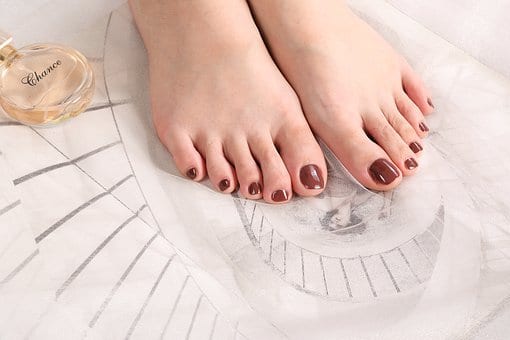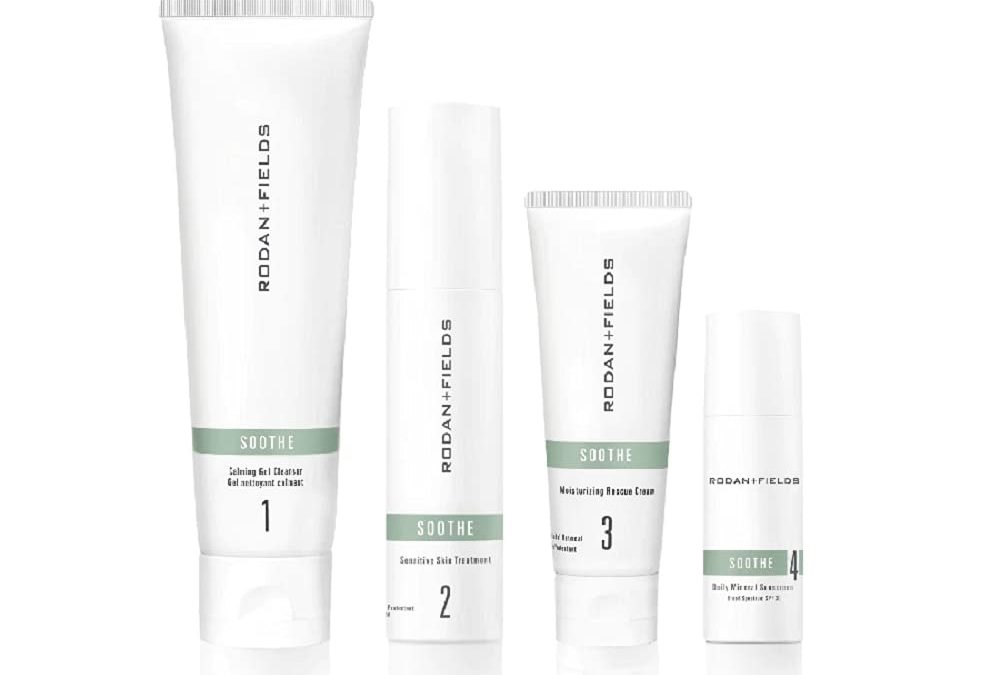Got Thick Toenails? Causes and Treatment

written by nail expert Jess Rowley
Topics we've covered
Struggling With Thick Toenails? Here’s Everything You Need To Know:
Got thick toenails and looking to find a way to restore them to their former glory?
You’re actually not the only one suffering from this issue!
Thick toenails are one of the worst, they are not only horrible to look at but can be very painful when left untreated too!
They are actually more common than you may think, with many potential causes it can be quite a challenge to distinguish what you need to treat these pesky nails.
But wait let me tell you something:
I have done all the research, factoring in all the causes, treatments, and prevention tactics so we don’t need to feel insecure about our tootsies anymore.
Here’s a tip: take a close look at the symptoms, finding the right one is so crucial when it comes to treatment and if in doubt go seek medical advice from a professional.
But enough, for now, you don’t want to miss this!

Firstly what are thick toenails?
Thick toenails are true to their name, it means thickening of the nail and may make clipping much more difficult. Some toenails discolor to a yellow hue which may indicate the presence of a fungus.
As we age our nails break down and thick nails become more common. There are actually lots of potential causes of thick nails, from fungal infections to underlying conditions.
If left untreated these thick toenails can actually become very painful and more difficult to cure.
What are the symptoms and appearance of thick toenails?
Thick toenails aren’t ever visible in the earlier stages, but you will notice it more often when they begin to get thicker.
There are also other symptoms such as:
- – Brittle and weak nails
- – Foul odor coming from the nail
- – Trimming your nails becomes more difficult
- – You can even lift the nail from the nail bed
- – You may notice splits and cracks in the nail
- – Your toenails feel painful
- – You may notice dirt can easily get under the nail.
- – They will often have a yellow, green, or brown hue or lines on the nail too.
- – Toenails look chalky and scaly
You may not even notice pain in the early stages of the infection, but as soon as you do it’s important to treat it as soon as possible.
What causes thick toenails?
There are quite a lot of causes for thick toenails, from infections to medical conditions connected to the thickening of the nail.
Here are some of the top causes:
Fungal or yeast infections:
The most common cause of thick toenails, nail discoloration, and many other toe conditions are caused by nail fungus.
This type of fungus is also known as onychomycosis and it is the most common cause of discolored, yellowed, and thick nails.
Fungus primarily grows in warm and moist environments, spreading and developing quickly. The best way to prevent fungal infections on your toenails is to prevent walking around barefoot in public places.
Especially around pools, locker rooms, and showers.
Some people are more prone to fungal infections than others, whether it’s an underlying condition or because of their living.
Here’s what most commonly causes fungal infections:
- – Athletes foot
- – Footwear that isn’t well ventilated
- – Smoking
- – Prolonged exposure to wet areas
- – Weak immune system
- – Some medical conditions like diabetes
- – Damage to the nail
Now, a lot of things can cause fungal infections so it’s best you catch and treat them early– it will save a lot of time and pain in the future.
Treatment: For a fungal infection being the cause of the nail thickening the best way to treat is to get a fungal treatment. You can get one off Amazon, your local Walmart, or even prescribed from the doctor if the infection is bad.
If left for too long it may take months to repair and restore the nail, so if in worry consult a doctor or take some fungal treatments.
Injury
Injury is also a common cause of thick toenails. If there is sudden or prolonged exposure to trauma it can cause the nail to thicken.
This is most common in those who frequently play sports, like ice skating, ballet, dancing, soccer, and runners. This can also be caused by not wearing the right footwear.
It is usually mistaken for a fungal infection when really it has just been caused by trauma. If you are questioning whether it is caused by a fungal infection, maybe consider injury as a factor too.
Treatment: Usually, toe infections or damage to the toenail caused by an injury will go away, as time goes on. It may take a while as the nail may need to fully grow out to repair.
If the toenail is painful I would recommend applying ice and taking pain medication to help ease the pain.
Yellow nail syndrome:
Despite being a less common cause it can still affect both your toenails and fingernails. It causes your nails to have a yellow hue and become thicker as a result.
If you have yellow nail syndrome you may suffer from respiratory problems and swelling in your arms and legs as a result of fluid build-up.
Treatment: If you suffer from yellow nail syndrome the best cause of treatment is to see the doctor, they will be able to advise you to help with the issue and even prescribe a medication to help.
Doctors don’t know the exact cause but it could be down to genetics!
Psoriasis
Psoriasis is an autoimmune disorder that can be linked to nail thickening. It causes red, scaly patches on your skin and can affect both your fingernails and toenails.
It may not be the direct cause but it can cause ridges on the nails, causing them to appear thicker and become loose from the nail bed.
Treatment: The best cause of treatment is to go see the doctor as they may be able to prescribe some medication to help with the flare-up.
Aging:
As we age out nails breakdown and start to thicken, it is more common on toenails rather than fingernails.
Our nails don’t renew as much when we are older, causing them to break down. These are often not treatable as it’s a result of aging.
Instead, you can buff down the nails to smooth out the appearance, but if you notice your nails are getting thicker as you age, it’s nothing to worry about.

Can thick toenails cause complications if not treated?
If thick toenails are left untreated it can lead to some complications as over time it can get worse and more painful. If it gets to the point where it’s uncomfortable to wear shoes or even walk then that’s when you know you need to see a doctor.
If you leave it long enough it may be quite hard to treat as well, with long months of treatment it’s best to nip it in the bud when you first notice the issue.
Especially if it’s caused by fungal infections, it will stop the spread and prevent it from infecting other nails.
How to treat thick toenails:
Not all fungus infections need to be treated, but if it has caused the toenail to thicken that could be an indication that the infection has gotten worse.
Here are the best treatments to try before consulting the doctor:
– Clean the affected daily with warm soapy water.
– Use urea cream and wrap in a bandage overnight
– Apply a fungal treatment and gently file your nails
– Apply tea tree oil every day to calm the infection
– Try applying VapoRub on your nail each day to help reduce infection
– Make a paste with baking soda and water and apply to the affected area.
Medical treatment from a doctor:
If you have found that nothing works for you it may be best to go to the doctor, they may be able to help prescribe medication or even offer surgery to help with the problem.
They could offer you topical or oral medications, and if worst comes to worst they can offer laser treatment to help or removal of the nail to treat the nail bed.
This may require a lot of patience, it may take up to 18 months to heal and fully grow out, it is best to find a way to prevent this from happening again.
How can you prevent thick toenails?
After treatment there are ways you can prevent this infection from coming back, for example:
– Washing them with soapy water regularly and making sure you dry them off properly afterward to prevent creating a warm, damp environment.
– Make sure to keep your feet as dry as possible, wear cotton socks and change them after exercise to remove the moisture from your feet. Invest in well-ventilated shoes to circulate airflow.
– Invest in a pair of flip-flops if you are regularly around locker rooms or pools– even wear them in the shower.
– Make sure you regularly trim your toenails to prevent overgrowth and disinfect the tools you use afterward.
– Buy a new pair of shoes after being cured of nail fungus.
Summary:
It is so important to nip a problem like this in the bud as soon as you notice the issue, it can worsen and become more and more painful over time.
With causes such as aging, there isn’t too much you can do, but in cases such as fungal infections, it’s important to catch and treatment quickly.
If you are suffering from toenail thickening and don’t really know the cause it is best to go see a professional, they will be able to put your mind at ease or offer treatment.
Everyone deserves pretty tootsies, so make sure you do take action before it’s too late!

Best L’Oreal Products For Men
[Review] in 2022 written by nail expert Jess RowleyCheck out the results fast - here are our review winners[dica_divi_carousel item_width_tablet="400px" item_width_phone="345px"...

Best Neutrogena Skincare Products
[Review] in 2022 written by nail expert Jess RowleyCheck out the results fast - here are our review winners[dica_divi_carousel item_width_tablet="400px" item_width_phone="345px"...

Best Nivea Products For Men
[Review] in 2022 written by nail expert Jess RowleyCheck out the results fast - here are our review winners[dica_divi_carousel item_width_tablet="400px" item_width_phone="345px"...

Best Rodan+ Fields Products
[Review] in 2022 written by nail expert Jess RowleyCheck out the results fast - here are our review winners[dica_divi_carousel item_width_tablet="400px" item_width_phone="345px"...
Related Post: Best Nail Polish Base Coats



